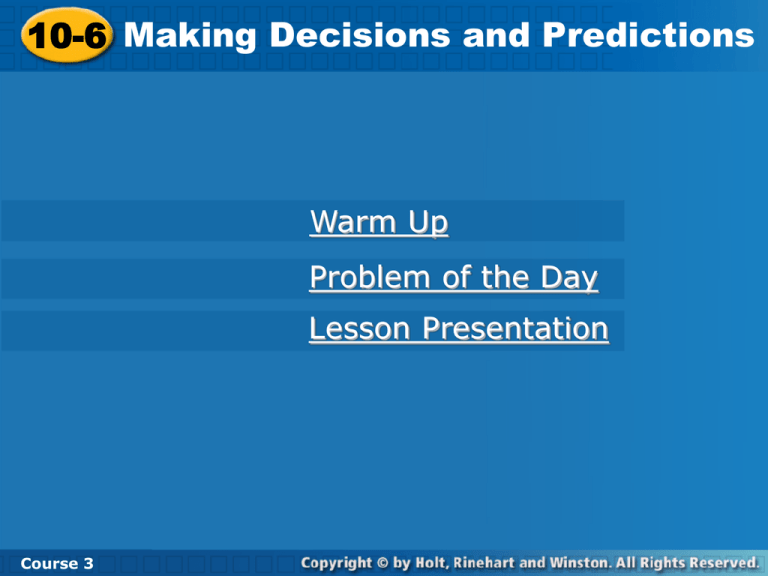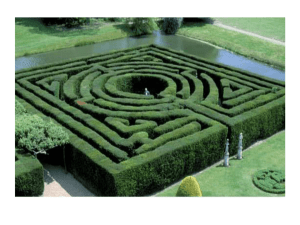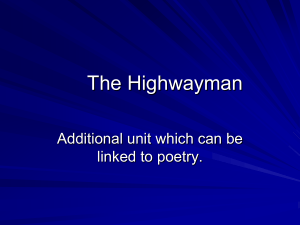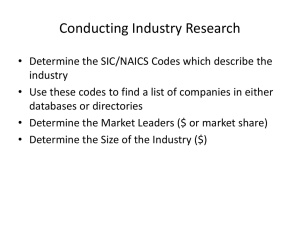10-6 Making Decisions and Predictions
advertisement

10-6 Making Decisions and Predictions Warm Up Problem of the Day Lesson Presentation Course 3 10-6 Making Decisions and Predictions Warm Up Solve each proportion. 6 x 1. 5.1 = 1.7 18 65 13 3. 0.1 = x 46 200 0.02 4. n = 46 Course 3 24 n 2. 108 = 9 2 10.58 10-6 Making Decisions and Predictions Problem of the Day Aiden is playing a board game using two six-sided number cubes. He wins if he doesn’t roll a six or a seven. What is the probability that Aiden will win on his next turn? 25 36 Course 3 10-6 Making Decisions and Predictions Learn to use probability to make decisions and predictions. Course 3 10-6 Making Decisions and Predictions Additional Example 1A: Using Probability to Make Decisions and Predictions The table shows the satisfaction rating in a business’s survey of 500 customers. Of their 240,000 customers, how many should the business expect to be unsatisfied? Pleased Satisfied Unsatisfied 125 340 35 Find the probability of unsatisfied customers in the survey. number of customers unsatisfied in survey 35 7 = or total number of customers surveyed 500 100 Course 3 10-6 Making Decisions and Predictions Additional Example 1A Continued 7 = t n t 100 240,000 7 x 240,000 = 100n 1,680,000 = 100n t 100 100 Set up a proportion. Find the cross products. Divide both sides by 100. 16,800 = n The business should expect to have 16,800 unsatisfied customers. Course 3 10-6 Making Decisions and Predictions Additional Example 1B: Using Probability to Make Decisions and Predictions Jared randomly draws a card from a 52-card deck and tries to guess what it is. If he tried this trick 1040 times over the course of his life, what is the best prediction for the amount of times it works? Find the theoretical probability of successful trick attempts. number of possible outcomes = 1 total possible outcomes 52 Course 3 10-6 Making Decisions and Predictions Additional Example 1B Continued 1 =t n t 52 1040 Set up a proportion. 1 1040 = 52n Find the cross products. 1040 = 52n t 52 52 Divide both sides by 52. 20 = n The trick would work about 20 times. Course 3 10-6 Making Decisions and Predictions Check It Out: Example 1A The table shows the satisfaction rating in a business’s survey of 500 customers. Of their 240,000 customers, how many should the business expect to be pleased? Pleased Satisfied Unsatisfied 125 340 35 Find the probability of pleased customers in the survey. number of customers pleased in survey 125 1 = or total number of customers surveyed 500 4 Course 3 10-6 Making Decisions and Predictions Check It Out: Example 1A Continued 1 = t n t 4 240,000 1 240,000 = 4n 240,000 = 4n t 4 4 Set up a proportion. Find the cross products. Divide both sides by 4. 60,000 = n The business should expect to have 60,000 please customers. Course 3 10-6 Making Decisions and Predictions Check It Out: Example 1B Kaitlyn randomly draws a domino tile from an 18 piece set and tries to guess what it is. If she tries this trick 2250 times over the course of her life, what is the best prediction for the amount of times it works? Find the theoretical probability of successful trick attempts. number of possible outcomes = 1 total possible outcomes 18 Course 3 10-6 Making Decisions and Predictions Check It Out: Example 1B Continued 1 =t n t 18 2250 Set up a proportion. 1 x 2250 = 18n Find the cross products. 2250 = 18n t 18 18 Divide both sides by 18. 125 = n Approximately 125 times the trick would work. Course 3 10-6 Making Decisions and Predictions Additional Example 2: Deciding Whether a Game is Fair In a game, two players each flip a coin. Player A wins if exactly one of the two coins is heads. Otherwise, player B wins. Determine whether the game is fair. List all possible outcomes. HH HT TT TH Find the theoretical probability of each player’s winning. P(player A winning) = 1 There are 2 possibilities 2 with exactly 1 coin as 1 heads. P(player B winning) = 2 1 1 Since 2 = 2 , the game is fair. Course 3 10-6 Making Decisions and Predictions Check It Out: Example 2 In a new game, two players each flip a coin. Player A wins if at least one of the two coins is heads. Otherwise, player B wins. Determine whether the game is fair. List all possible outcomes. HH HT TT TH Find the theoretical probability of each player’s winning. P(player A winning) = 3 There are 3 possibilities 4 with at least 1 coin as 1 heads. P(player B winning) = 4 1 3 Since 4 ≠ 4 , the game is not fair. Course 3 Decisions and Predictions 10-6 Making Insert Lesson Title Here Lesson Quiz: Part I 1. Out of the 35 products a salesperson sold last week, 8 of them were products worth over $200. About how many of these products should the salesperson expect to sell if he has 140 customers next month? 32 2. A student answers all 12 multiple choice questions on a quiz at random. Each multiple choice question has 4 choices. What is the best guess for the amount of multiple choice questions the student will answer correctly? 3 Course 3 Decisions and Predictions 10-6 Making Insert Lesson Title Here Lesson Quiz: Part II 3. In a game, two players each roll a 6-sided number cube and add the two numbers. If the roll is a 6 or less, player A wins. If the roll is 8 or more, player B wins. if the roll is a 7, the players tie and roll again. Is this a fair game? Yes Course 3



![SEM_1_-_2.03-2.04_and_2.06_PPT[1]](http://s2.studylib.net/store/data/005412429_2-ee09ccc3ae8bb5a8455b0fdbcc5543ae-300x300.png)




